Creep Behavior of Resin Matrix and Basalt Fiber Reinforced Polymer (BFRP) Plate at Elevated Temperatures
Abstract
:1. Introduction
2. Materials and Methods
2.1. Raw Materials
2.2. Test Setup and Test Procedure
2.3. Dynamic Mechanical Thermal Analysis (DMTA)
2.4. Interlaminar Shear Strength (ILSS) Test
2.5. Cross-Section Observation
3. Results and Discussion
3.1. Creep Behavior of the Resin Matrix
3.2. Creep Behavior of BFRP
3.3. Thermomechanical Properties of the Resin Matrix
3.4. Thermomechanical Properties of BFRP
3.5. Interface Performance Analysis
4. Conclusions
- (1)
- At elevated temperatures, the creep deformation is much larger than that at 25 °C. With combined loading and high temperature, when the strain reached the ultimate strain of 16%, the specimen would be subject to rupture failure. The creep behavior of the matrices performs completely differently for the cases of 80 °C and 120 °C; the first increased with time, first, and then gradually decreased, while the second increased continuously, due to the temperature before and after the glass transition temperature.
- (2)
- As the exposure temperatures exceeded the glass transition temperature of the BFRP specimens, the resin matrix attained sufficient mobility to transfer the stress to the fiber. Due to the unevenness of each bundle of fibers, the interior stress released, and irreversible damage occurred, which led to the interface between the fiber and resin matrix being damaged. Interlaminar shear strength (ILSS) degradation can be evaluated based on the tan delta of the resin matrix and the BFRP specimens.
- (3)
- Molecular chain scission and post-cure are independent processes. Sustained load is beneficial to post-curing for the epoxy resin, even though irreversible damage occurred between the basalt fiber and the epoxy resin.
Acknowledgments
Author Contributions
Conflicts of Interest
References
- Terrasi, G.; Meier, U.; Affolter, C. Long-Term Bending Creep Behavior of Thin-Walled CFRP Tendon Pr etensioned Spun Concrete Poles. Polymers 2014, 6, 2065–2081. [Google Scholar] [CrossRef]
- Lu, Z.; Xian, G.; Li, H. Effects of elevated temperatures on the mechanical properties of basalt fibers and BFRP plates. Constr. Build. Mater. 2016, 127, 1029–1036. [Google Scholar] [CrossRef]
- Wu, G.; Wang, X.; Wu, Z.S.; Dong, Z.Q.; Zhang, G.C. Durability of basalt fibers and composites in corrosive environments. J. Compos. Mater. 2015, 49, 873–887. [Google Scholar] [CrossRef]
- Wu, G.; Shi, J.; Seracino, R.; Wu, Z.S.; Zhu, H. Bond Behavior between Basalt Fiber–Reinforced Polymer Sheet and Concrete Substrate under the Coupled Effects of Freeze-Thaw Cycling and Sustained Load. J. Compos. Constr. 2013, 17, 530–542. [Google Scholar]
- Adelzadeh, M.; Hajiloo, H.; Green, M. Numerical Study of FRP Reinforced Concrete Slabs at Elevated Temperature. Polymers 2014, 6, 408–422. [Google Scholar] [CrossRef]
- Gao, W.Y.; Dai, J.-G.; Teng, J.G. Simple Method for Predicting Temperatures in Insulated, FRP-Strengthened RC Members Exposed to a Standard Fire. J. Compos. Constr. 2015, 19, 04015013. [Google Scholar] [CrossRef]
- Lu, Z.; Xian, G.; Li, H. Effects of exposure to elevated temperatures and subsequent immersion in water or alkaline solution on the mechanical properties of pultruded BFRP plates. Compos. B Eng. 2015, 77, 421–430. [Google Scholar] [CrossRef]
- Bellakehal, H.; Zaidi, A.; Masmoudi, R.; Bouhicha, M. Behavior of FRP Bars-Reinforced Concrete Slabs under Temperature and Sustained Load Effects. Polymers 2014, 6, 873–889. [Google Scholar] [CrossRef]
- Ascione, L.; Berardi, V.P.; D’aponte, A. Creep phenomena in FRP materials. Mech. Res. Commun. 2012, 43, 15–21. [Google Scholar] [CrossRef]
- Burke, P.J.; Bisby, L.A.; Green, M.F. Effects of elevated temperature on near surface mounted and externally bonded FRP strengthening systems for concrete. Cem. Concr. Compos. 2013, 35, 190–199. [Google Scholar] [CrossRef]
- Dutta, P.K.; Hui, D. Creep rupture of a GFRP composite at elevated temperatures. Comput. Struct. 2000, 76, 153–161. [Google Scholar] [CrossRef]
- Amiri, A.; Yu, A.; Webster, D.; Ulven, C. Bio-Based Resin Reinforced with Flax Fiber as Thermorheologically Complex Materials. Polymers 2016, 8, 153. [Google Scholar] [CrossRef]
- Goertzen, W.K.; Kessler, M.R. Creep behavior of carbon fiber/epoxy matrix composites. Mater. Sci. Eng. A 2006, 421, 217–225. [Google Scholar] [CrossRef]
- Wei, B.; Cao, H.; Song, S. Environmental resistance and mechanical performance of basalt and glass fibers. Mater. Sci. Eng. A 2010, 527, 4708–4715. [Google Scholar] [CrossRef]
- Greco, A.; Maffezzoli, A.; Casciaro, G.; Caretto, F. Mechanical properties of basalt fibers and their adhesion to polypropylene matrices. Compos. B Eng. 2014, 67, 233–238. [Google Scholar] [CrossRef]
- Morozov, N.N.; Bakunov, V.S.; Morozov, E.N.; Aslanova, L.G.; Granovskii, P.A.; Prokshin, V.V.; Zemlyanitsyn, A.A. Materials Based on Basalts from the European North of Russia. Glass Ceram. 2001, 58, 100–104. [Google Scholar] [CrossRef]
- Shi, J.Z.; Wang, X.; Wu, Z.S.; Zhu, Z.G. Creep behavior enhancement of a basalt fiber-reinforced polymer tendon. Constr. Build. Mater. 2015, 94, 750–757. [Google Scholar] [CrossRef]
- Wang, X.; Shi, J.Z.; Liu, J.X.; Yang, L.; Wu, Z.S. Creep behavior of basalt fiber reinforced polymer tendons for prestressing application. Mater. Des. 2014, 59, 558–564. [Google Scholar] [CrossRef]
- Lu, Z.Y.; Xian, G.J.; Li, H. Experimental Study on the Mechanical Properties of Basalt Fibres and Pultruded BFRP Plates at Elevated Temperatures. Polym. Polym. Compos. 2015, 23, 277–283. [Google Scholar]
- Song, R.; Muliana, A.H.; Palazotto, A. An empirical approach to evaluate creep responses in polymers and polymeric composites and determination of design stresses. Compos. Struct. 2016, 148, 207–223. [Google Scholar] [CrossRef]
- Al-Haik, M.; Vaghar, M.R.; Garmestani, H.; Shahawy, M. Viscoplastic analysis of structural polymer composites using stress relaxation and creep data. Compos. B Eng. 2001, 32, 165–170. [Google Scholar] [CrossRef]
- Crochon, T.; Li, C.; Lévesque, M. On time–temperature-dependent viscoelastic behavior of an amorphous polyimide. Mech. Time-Depend. Mater. 2015, 19, 305–324. [Google Scholar] [CrossRef]
- American Society for Testing and Materials. Standard Test Method for Tensile Properties of Plastics; ASTM International: West Conshohocken, PA, USA, 2000; pp. 1–13. [Google Scholar]
- Lu, Z.; Xian, G. Resistance of basalt fibers to elevated temperatures and water or alkaline solution immersion. Polym. Compos. 2016. [Google Scholar] [CrossRef]
- American Society for Testing and Materials. Standard Test Method for Tensile Properties of Polymer Matrix Composite Materials; ASTM International: West Conshohocken, PA, USA, 2000; pp. 1–10. [Google Scholar]
- American Society for Testing and Materials. Standard Test Method for Short-Beam Strength of Polymer Matrix Composite Materials and Their Laminates; ASTM International: West Conshohocken, PA, USA, 2006; pp. 1–8. [Google Scholar]
- Li, Y.; Kessler, M.R. Creep-resistant behavior of self-reinforcing liquid crystalline epoxy resins. Polymer 2014, 55, 2021–2027. [Google Scholar] [CrossRef]
- Browning, C.E. The mechanisms of elevated temperature property losses in high performance structural epoxy resin matrix materials after exposures to high humidity environments. Polym. Eng. Sci. 1978, 18, 16–24. [Google Scholar] [CrossRef]
- Jia, Y.; Peng, K.; Gong, X.-L.; Zhang, Z. Creep and recovery of polypropylene/carbon nanotube composites. Int. J. Plast. 2011, 27, 1239–1251. [Google Scholar] [CrossRef]
- Daver, F.; Kajtaz, M.; Brandt, M.; Shanks, R.A. Creep and Recovery Behaviour of Polyolefin-Rubber Nanocomposites Developed for Additive Manufacturing. Polymers 2016, 8, 437. [Google Scholar] [CrossRef]
- Bledzki, A.K.; Faruk, O. Creep and impact properties of wood fibre–polypropylene composites: Influence of temperature and moisture content. Compos. Sci. Technol. 2004, 64, 693–700. [Google Scholar] [CrossRef]
- Findley, W.N.; Lai, J.S.; Onaran, K. Creep and Relaxation of Nonlinear Viscoelastic Materials; North-Holland Publishiong Company: New York, NY, USA, 2013; pp. 11–17. [Google Scholar]
- Iijima, T.; Yoshioka, N.; Tomoi, M. Effect of cross-link density on modification of epoxy resins with reactive acrylic elastomers. Eur. Polym. J. 1992, 28, 573–581. [Google Scholar] [CrossRef]
- Yang, Y.M.; Xian, G.J.; Li, H.; Sui, L.L. Thermal aging of an anhydride-cured epoxy resin. Polym. Degrad. Stable 2015, 118, 111–119. [Google Scholar] [CrossRef]
- Lu, Z.Y.; Xian, G.J.; Li, H. Effects of thermal aging on the water uptake behavior of pultruded BFRP plates. Polym. Degrad. Stable 2014, 110, 216–224. [Google Scholar] [CrossRef]
- Goyanes, S.N.; König, P.G.; Marconi, J.D. Dynamic mechanical analysis of particulate-filled epoxy resin. J. Appl. Polym. Sci. 2003, 88, 883–892. [Google Scholar] [CrossRef]
- Dong, S.; Gauvin, R. Application of dynamic mechanical analysis for the study of the interfacial region in carbon fiber/epoxy composite materials. Polym. Compos. 1993, 14, 414–420. [Google Scholar] [CrossRef]
- Venkateshwaran, N.; Perumal, A.E.; Arunsundaranayagam, D. Fiber surface treatment and its effect on mechanical and visco-elastic behaviour of banana/epoxy composite. Mater. Des. 2013, 47, 151–159. [Google Scholar] [CrossRef]
- Sirivedin, S.; Fenner, D.N.; Nath, R.B.; Galiotis, C. Matrix crack propagation criteria for model short-carbon fibre/epoxy composites. Compos. Sci. Technol. 2000, 60, 2835–2847. [Google Scholar] [CrossRef]
- Gu, W. Interfacial Adhesion Evaluation of Uniaxial Fiber-Reinforced-Polymer Composites by Vibration Damping of Cantilever Beam; Virginia Polytechnic Institute and State University: Blacksburg, VA, USA, 1997; pp. 23–24. [Google Scholar]
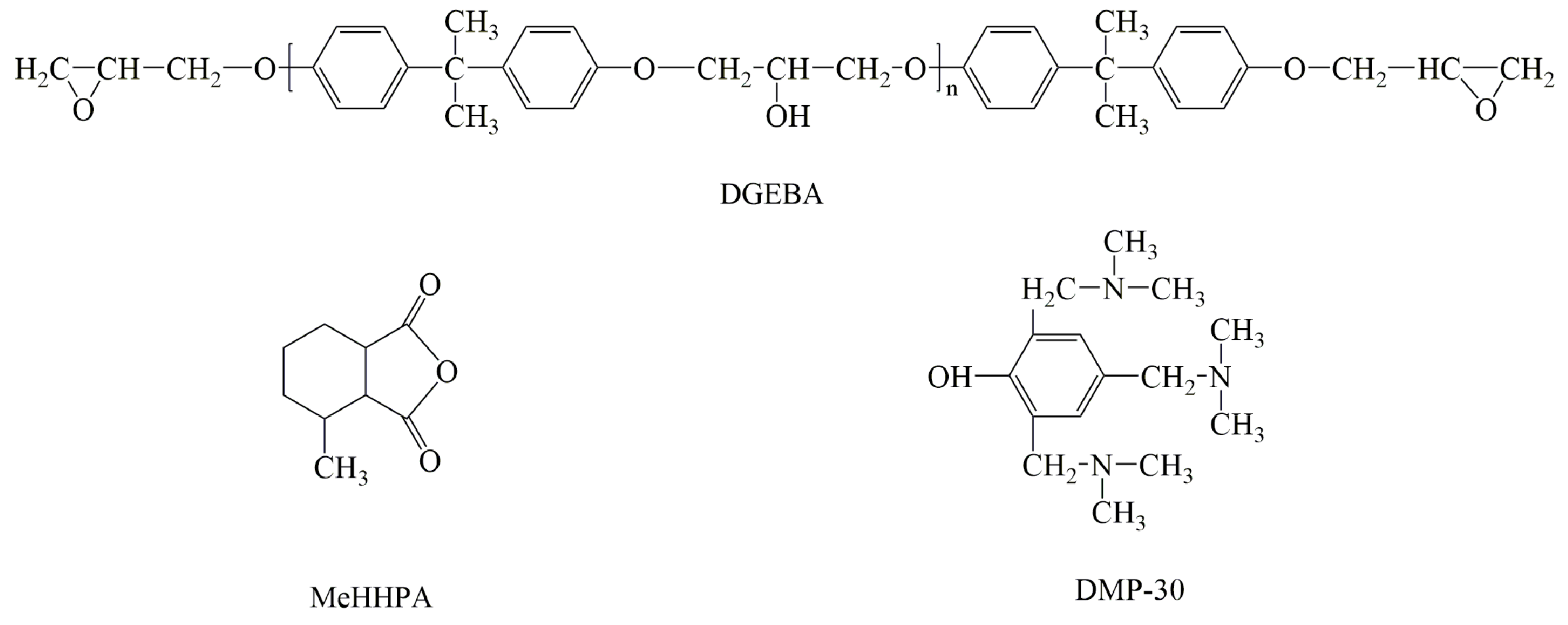
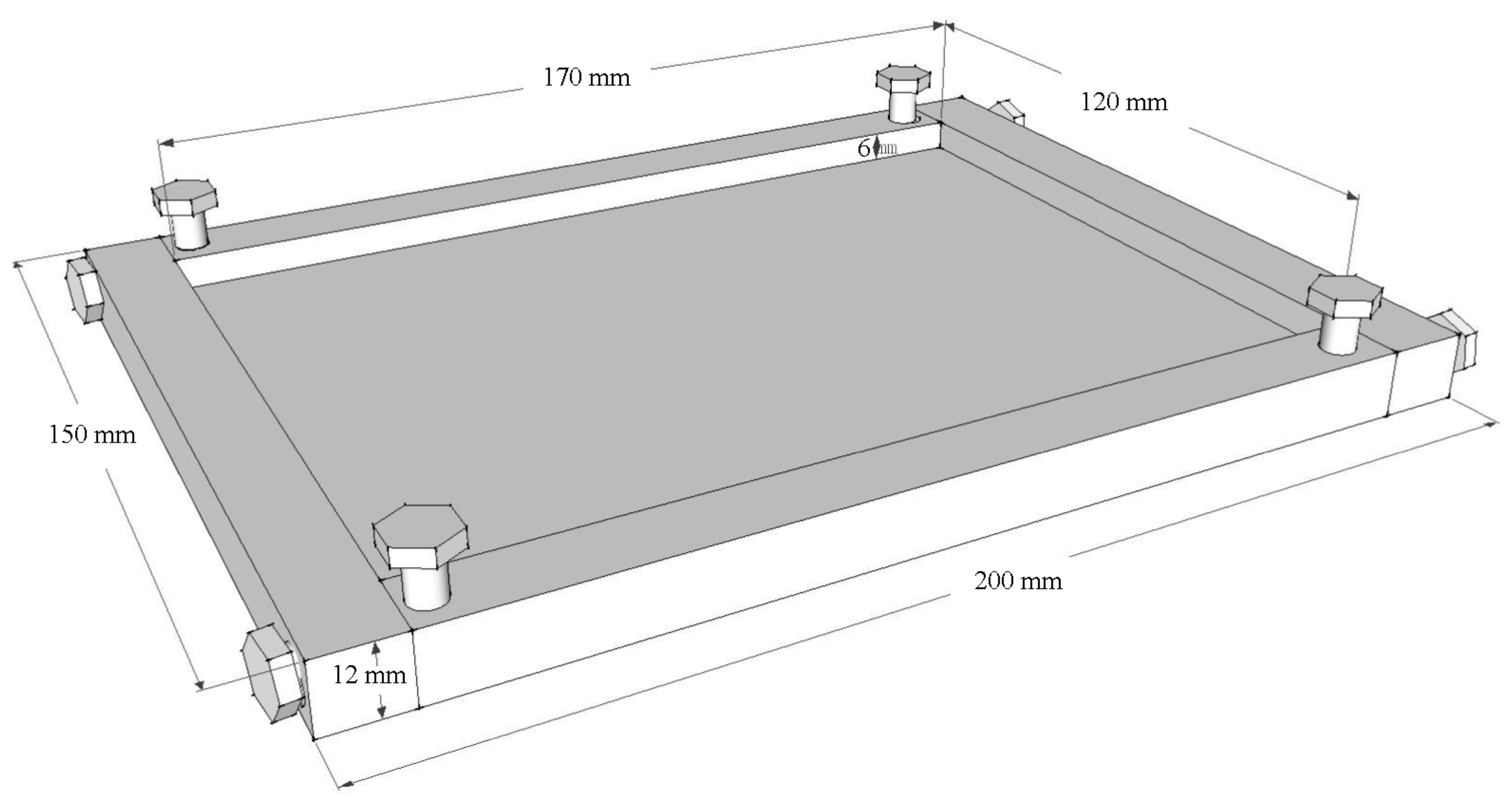
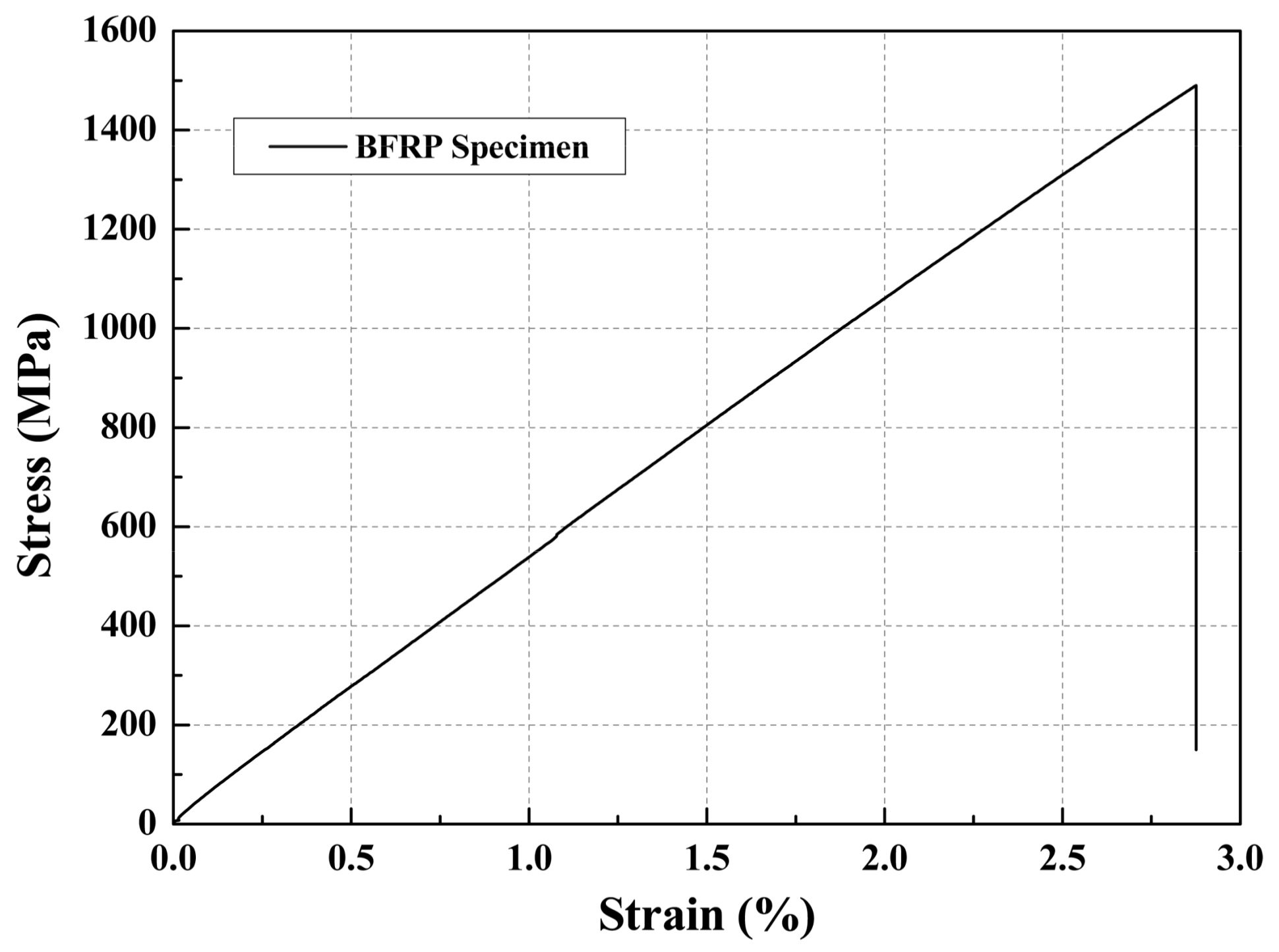

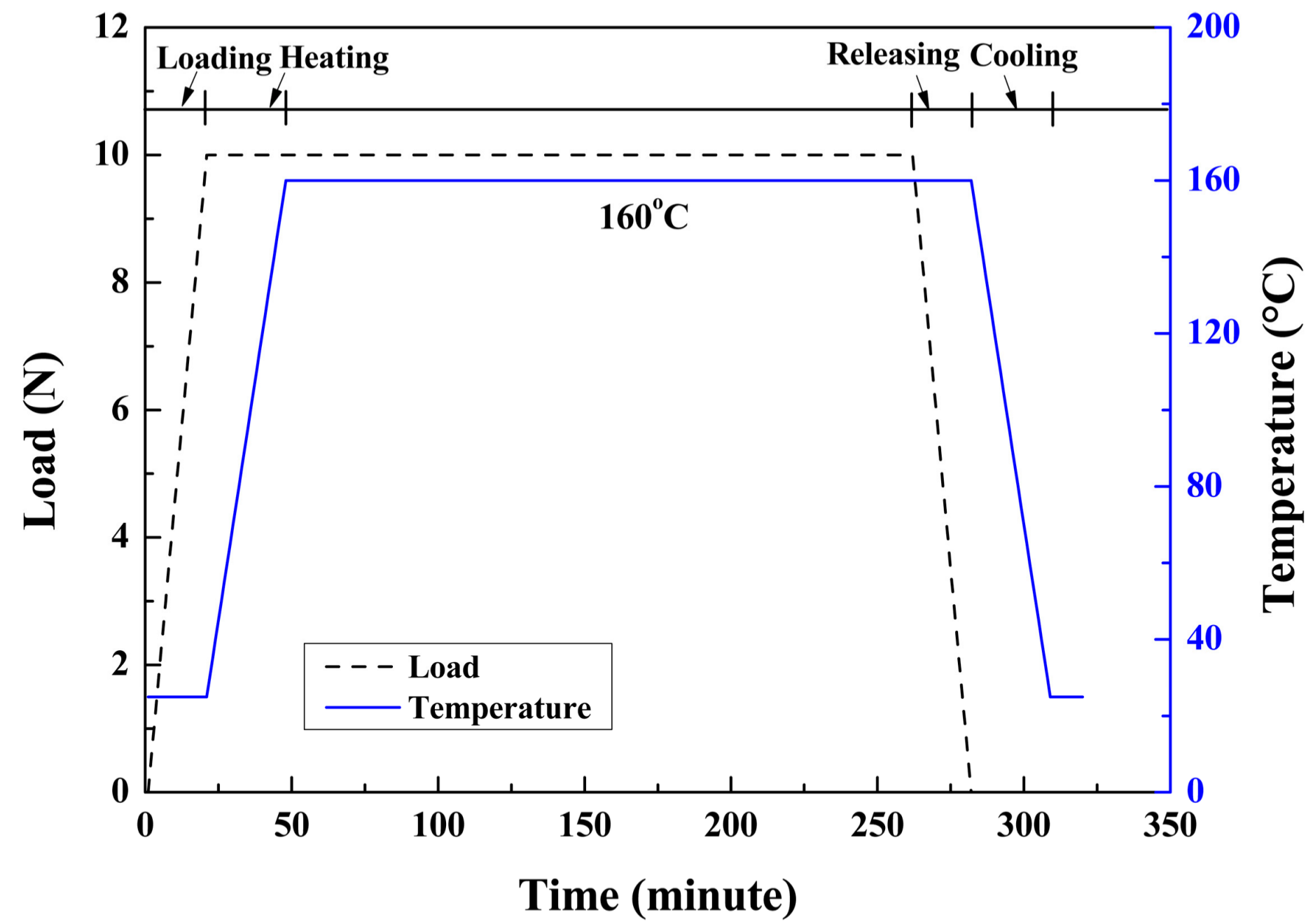

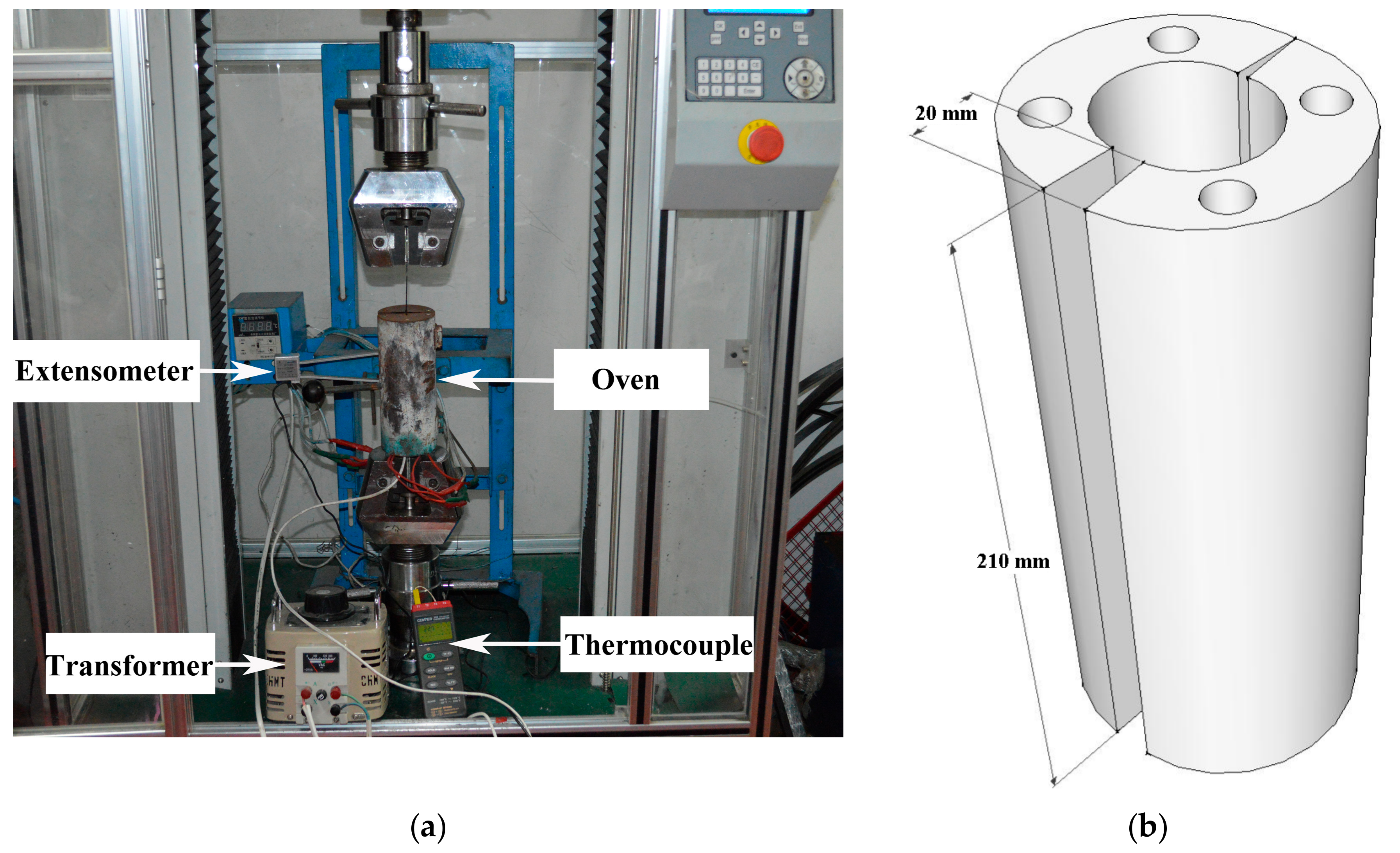
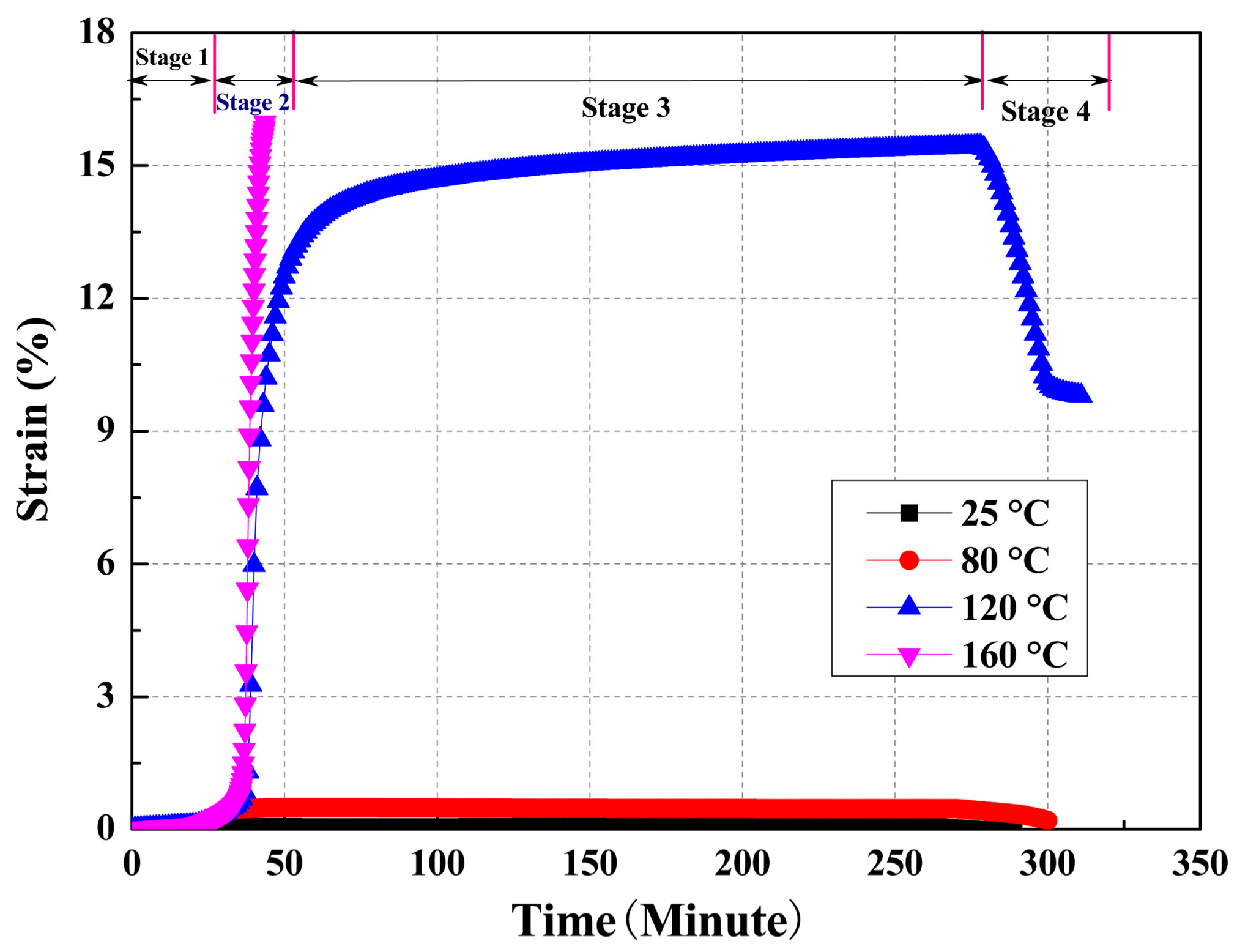
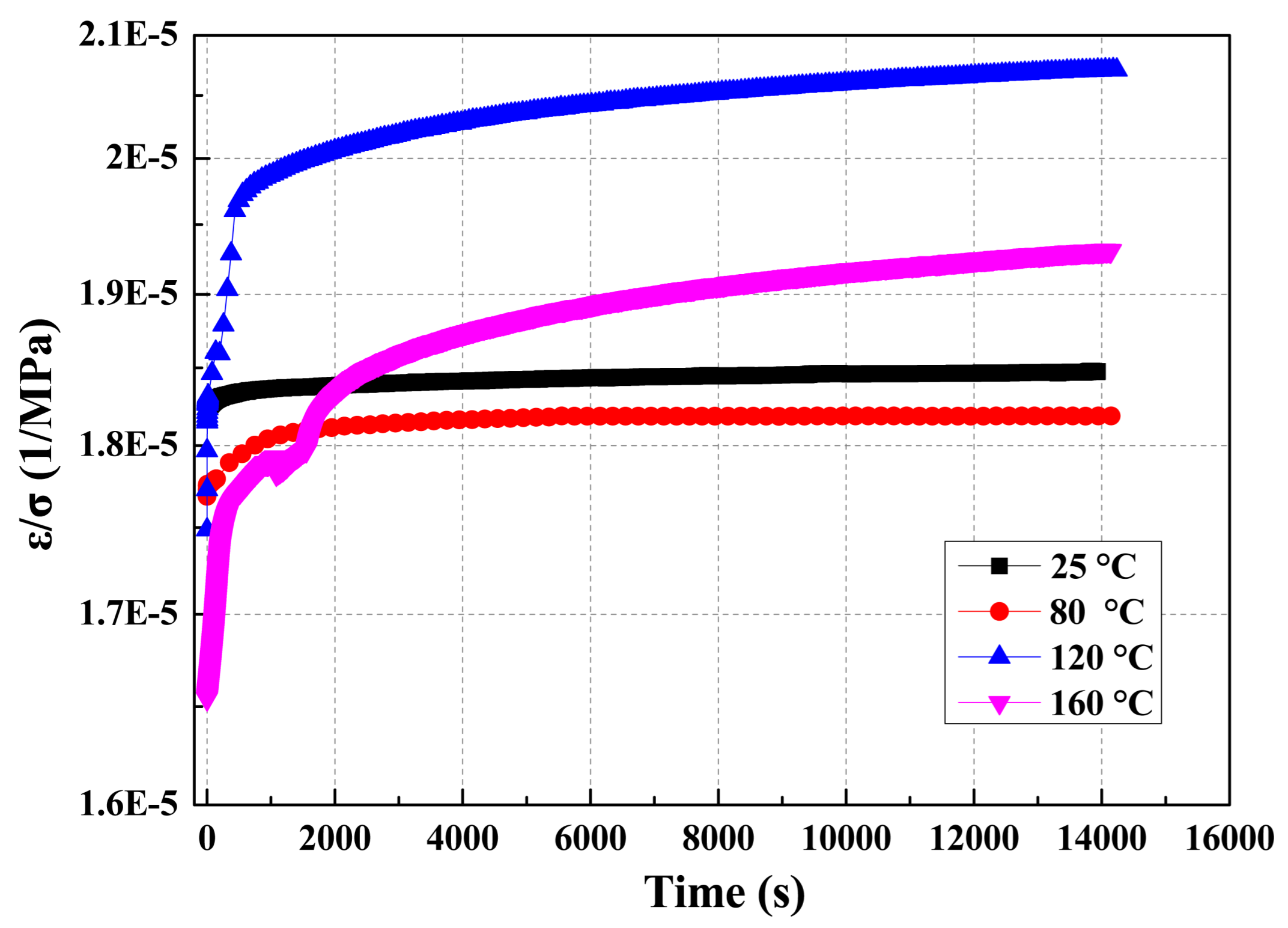


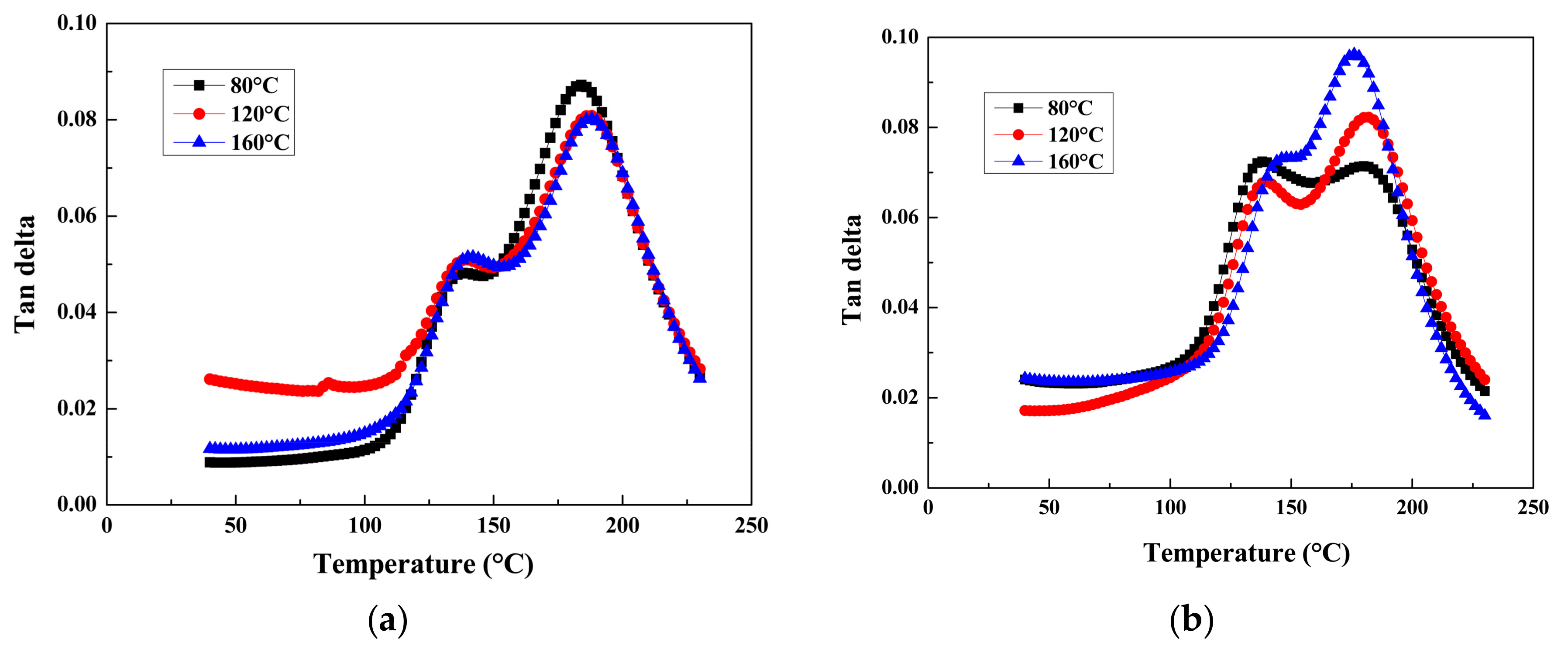


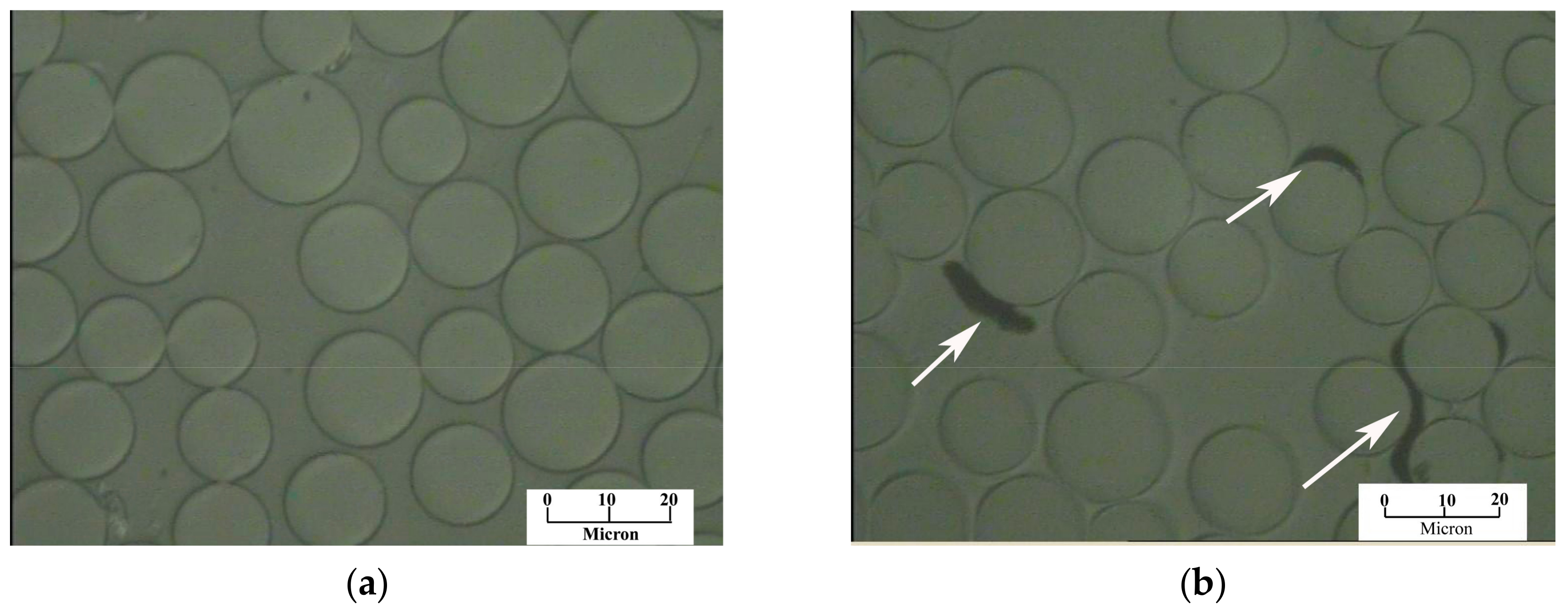
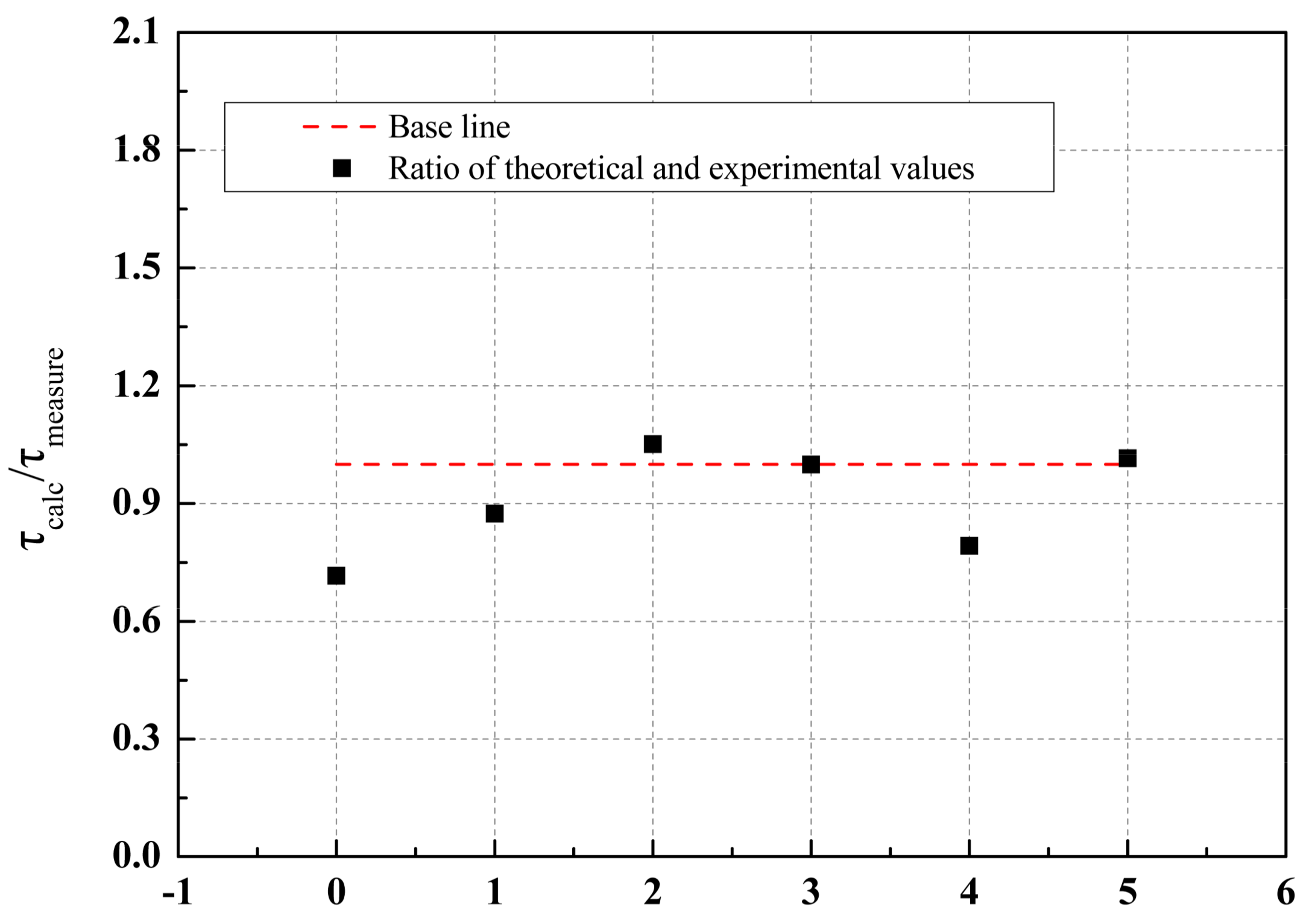
| Fibers | Diameter (μm) | Tensile Strength (GPa) | Tensile Modulus (GPa) | Elongation at Break (%) | Service Temperature |
|---|---|---|---|---|---|
| Basalt | 6~21 | 3.0~4.8 | 79.3~93.1 | 3.1 | 270 °C~700 °C |
| E-glass | 6~21 | 3.1~3.8 | 72.5~75.5 | 4.7 | −50 °C~380 °C |
| Temperatures | με (t = 0) | Με (t = 4 h) | Increasing before Stable Increase | Exposure Time at the Knee Point (s) | Strain Increment (με) |
|---|---|---|---|---|---|
| 25 °C | 499 | 679 | 37 | 0 | 180 |
| 80 °C | 485 | 3625 | 4642 | 1740 | 1017 |
| 120 °C | 491 | 154,300 | 135,100 | 2880 | 153,908 |
| 160 °C | 490 | - | - | - | - |
| Temperatures | με (t = 0) | Με (t = 4 h) | Increasing before Stable Increase | Exposure Time at the Knee Point (s) | Strain Increment (με) |
|---|---|---|---|---|---|
| 25 °C | 9477 | 9608 | 92 | 1244 | 131 |
| 80 °C | 9197 | 9457 | 150 | 1349 | 260 |
| 120 °C | 9094 | 10,772 | 852 | 1337 | 1678 |
| 160 °C | 8566 | 10,041 | 1034 | 2072 | 1475 |
| Specimens | Load Levels | 25 °C | 80 °C | 120 °C | 160 °C |
|---|---|---|---|---|---|
| Epoxy resin | 0 N | 5.78 × 10−3 | 5.56 × 10−3 | 5.53 × 10−3 | 5.78 × 10−3 |
| 10 N | 5.32 × 10−3 | 5.51 × 10−3 | 5.79 × 10−3 | - | |
| BFRP | 0 N | 0.88 | 0.69 | 0.68 | 0.66 |
| 9500 N | 0.88 | 0.52 | 0.56 | 0.61 |
| Status | Temperature | tan δc | tan δm | Em (GPa) | Ec (GPa) | τmeasure (Mpa) | τcalc (Mpa) |
|---|---|---|---|---|---|---|---|
| Without loading | 80 °C | 0.0872 | 1.16 | 2.79 | 56.5 | 73.10 | 57.93 |
| 120 °C | 0.0809 | 1.163 | 2.80 | 57.6 | 63.54 | 63.48 | |
| 160 °C | 0.0802 | 1.143 | 3.00 | 56.4 | 62.74 | 65.94 | |
| Loading | 80 °C | 0.0725 | 1.137 | 2.86 | 56.28 | 73.21 | 74.32 |
| 120 °C | 0.0919 | 1.168 | 2.80 | 58.03 | 61.68 | 53.91 | |
| 160 °C | 0.0963 | - | - | 53.06 | 58.24 | 41.71 |
© 2017 by the authors. Licensee MDPI, Basel, Switzerland. This article is an open access article distributed under the terms and conditions of the Creative Commons Attribution (CC BY) license (http://creativecommons.org/licenses/by/4.0/).
Share and Cite
Lu, Z.; Xian, G.; Rashid, K. Creep Behavior of Resin Matrix and Basalt Fiber Reinforced Polymer (BFRP) Plate at Elevated Temperatures. J. Compos. Sci. 2017, 1, 3. https://doi.org/10.3390/jcs1010003
Lu Z, Xian G, Rashid K. Creep Behavior of Resin Matrix and Basalt Fiber Reinforced Polymer (BFRP) Plate at Elevated Temperatures. Journal of Composites Science. 2017; 1(1):3. https://doi.org/10.3390/jcs1010003
Chicago/Turabian StyleLu, Zhongyu, Guijun Xian, and Khuram Rashid. 2017. "Creep Behavior of Resin Matrix and Basalt Fiber Reinforced Polymer (BFRP) Plate at Elevated Temperatures" Journal of Composites Science 1, no. 1: 3. https://doi.org/10.3390/jcs1010003






